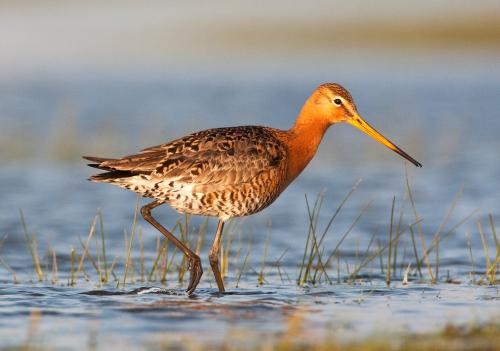De Alde Feanen National Park tells the story of farmers, peat cutters, and fishermen. They settled in the area, left their marks, and moved on. You can still see this reflected in the landscape today. In addition to wide canals, narrow ditches, open polders and lakes, dense alder forests, and vast reed fields, you will also find, for example, chestnut trees that refer to former farmyards. If you know how to look, you'll see more and more elements that recall the industrious past. During the walk, the guide will tell you all about the history and the special residents of this national park. The walk of approximately 6 kilometers mainly goes over unpaved paths. So don't forget to wear good walking shoes.
The Black Gold
Starting from 1700, peat extraction led to the excavation of large areas of hayland. Peat (dried turf) was in high demand throughout the Netherlands to fuel stoves. It was not without reason that people called it 'the black gold'. The voices of the peat workers and the sound of the hand tools have long since become a thing of the past. The heavy, poorly paid work during a harsh time as well. With the rise of gas, the demand for peat decreased, the work came to a halt, and the area with deepened peat was left empty and abandoned. Water and nature took its place.

Walking Route XL
In the mood for a hefty hike of over 20 km? You can walk this route on your own. You will pass canals, bog holes, and open water. You will also come across extensive reed fields and secluded swamp forests. Tip: don't forget to enjoy the wide views over the Frisian meadows.
Note! The ferry does not operate in winter. So, check the current ferry times carefully.
Mowing and fertilizing as farmers once did
Lakes with water soldier and fountain herbs, moist heaths, bluegrass, marsh marigold hay, and peat moss reed lands, along with great fen swamps and raised bog forests, make the area today a valuable and diverse natural habitat. The grasslands are managed as farmers did in the past. Namely, mowing after July 15, occasionally fertilizing with rough manure, and grazing with livestock after haying. This keeps the vegetation short, the landscape open, and gives biodiversity a chance. Vulnerable bird species such as the ruff, snipe, and black-tailed godwit feel at home here.

Explore the experience route yourself
Do you want to know more about the home of the godwit and the measures taken for the safety, food, and tranquility of these meadow birds? Then set off independently and walk the experience route in National Park De Alde Feanen.
Migration Bird Stopover Sites
In the autumn and early spring, thousands of shorebirds use the grasslands, known as stopover sites, in National Park De Alde Feanen. These are important rest stops along the migration route. Migratory birds make a stop here to forage and strengthen themselves for their onward journey.
You can admire the birds in peace from the bird-watching huts. They are located among other places along the walking routes in the Wikelslân and further in the Reid om ‘e Krite, the Westersanning, and in the Jan Durkspolder.
Do you want to view the area from a distance, with more overview? Then climb the observation towers in the Wikelslân with a view of the Wikelslân and the Reid om ‘e Krite. Or the tower in the Wolwarren with a view of the Jan Durkspolder.
